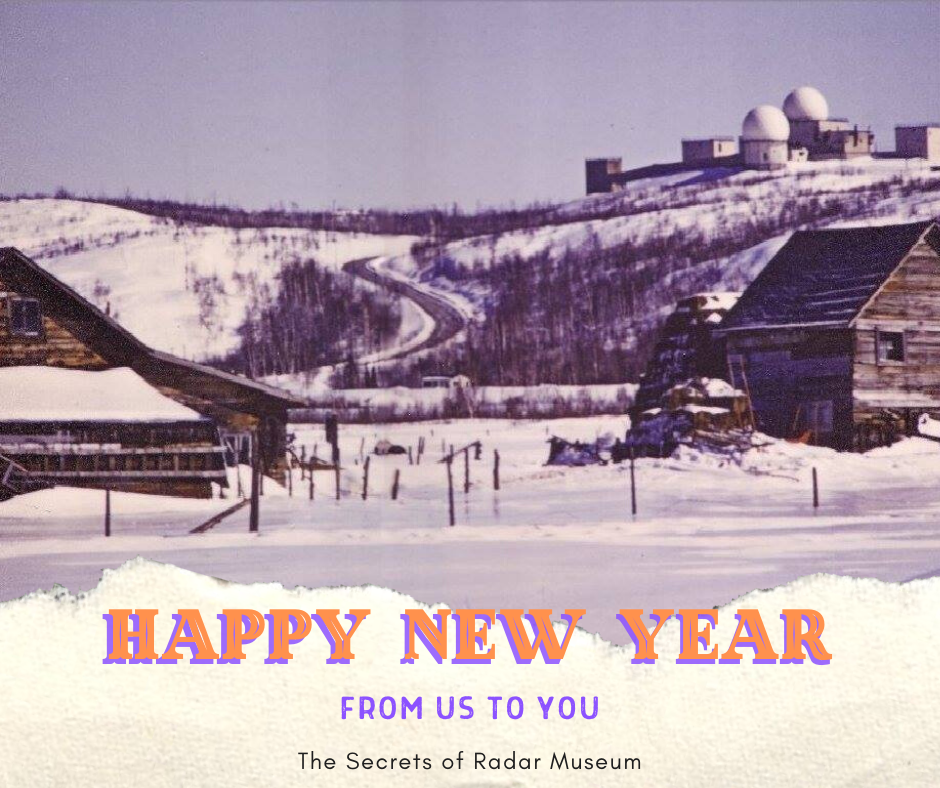We were deeply saddened to learn of Charlie Jackson’s recent passing. Charlie was a founder of this museum, and for many years he was a regular presence giving tours and answering questions. Intelligent, articulate, warm, and jovial, Charlie delighted in telling stories of his time as a radar mechanic and instructor during the Second World War, and his memory for technical radar and electronic specifications was exceptional. He was a teacher at heart and his passion for sharing knowledge was evident no matter who he spoke to. Charlie’s final visit to the museum was in 2018 when he gave a talk to a large group of Girl Guides who sat in rapt attention. We owe Charlie a great debt of gratitude for all the time he put in to make SORM the place it is today, and for his willingness to share his experiences. Our sincere condolences to his family, especially his wife Jean, who often accompanied him to the museum and although she must have heard his stories dozens of times, never lost her enthusiasm and always encouraged him to talk more. The family has graciously asked that expressions of sympathy and donations be made to the Secrets of Radar Museum or the Alzheimer Society through London Cremation Services (519-672-0459 or at www.londoncremation.com).
Charlie Jackson speaking to a visiting Girl Guide troupe, November 8, 2018.
Charlie Jackson’s Obituary, from the London Free Press:
Charles (Charlie) Murfin Jackson passed away peacefully at Parkwood Veteran's Institute on May 7, 2021, in his 101st year. Charles was the beloved husband of Jean Jackson, to whom he was happily married since May 21, 1949, and the dear father of Brian Jackson (wife Joyce), Carolyn Wright (husband Charlie), Nancy Wiebe and Louise Hush (husband John). He was the proud grandfather of ten and great-grandfather of eleven. Charlie was a WWII radar instructor, an electronics teacher, Principal of the Western Ontario Institute of Technology, and Vice President of St. Clair College in Windsor, Ontario. In his long retirement, he enjoyed playing golf and bridge, and dancing with his wife Jean and with the many friends they made through those activities. He also was a lifelong, active member of the Kiwanis Club in London and Windsor. The radar museum in London was a keen interest for him. Jean and Charlie enjoyed an independent life up until the past few years. Jean was a loving and devoted partner as Charlie transitioned to Veteran's Care at Parkwood. In keeping with his wishes, cremation has taken place. A memorial service will be held at a later date to reflect upon and to celebrate Charlie's life. Email louise.hush@gmail.com for details. Expressions of sympathy and donations would be appreciated and may be made to the Radar Museum of London or the Alzheimer Society through London Cremation Services (519-672-0459 or at www.londoncremation.com). Very special thanks to the attentive staff and Dr. Borrie at Parkwood. Through the pandemic, they have been an amazing support to Charlie's mental and physical wellbeing.
Published on May 12, 2021
Obituary shared by St. Clair College: Charles Jackson was a trailblazer
May 12, 2021
Charles (Charlie) Jackson, who became head of the Western Ontario Institute of Technology (which was the predecessor to St. Clair College), died at his retirement home in London on May 7. He was 100.
Mr. Jackson became the principal of the Western Ontario Institute of Technology (W.O.I.T.) in 1960 and served until 1966. He served as St. Clair College’s Vice President – Academic from 1967 to 1978,
Mr. Jackson oversaw the transition of WOIT (which was located on Mercer Street in Windsor) to St. Clair College, under the provincial legislation creating a network of Colleges of Applied Arts and Technology back in the late 1960s.
He once told a reporter that the success of the community college initiative was a source of pride for him. He noted that the year before the South Windsor land acquisition where St. Clair now sits, W.O.I.T graduated 80 students but there were 120 jobs waiting for them.
“Our students were already able to talk on their bosses’ level,” he said at the time. “We were proving that we offered a concentrated and job-oriented education for people who wouldn’t or couldn’t go to university. Our students were adults and we treated them as adults……and it paid off. “
Mr. Jackson moved to London after his retirement. He leaves behind his wife Jean, four children, 10 grandchildren and 11 great-grandchildren.
St. Clair President Patti France honoured Mr. Jackson as a trailblazer and someone who cared deeply about the College. “W.O.I.T. built the foundation for St. Clair College to continue the work of providing a place for students to advance their education, find jobs in their fields and contribute to their communities.”
In September of 2014, the College named the road in front of the Ford Centre of Excellence in Manufacturing (FCEM) at our main campus, Chas Jackson Way in his honour. His portrait is displayed on the wall of Griffin Hall (across from our College bookstore) alongside the portraits of the past College Presidents.








